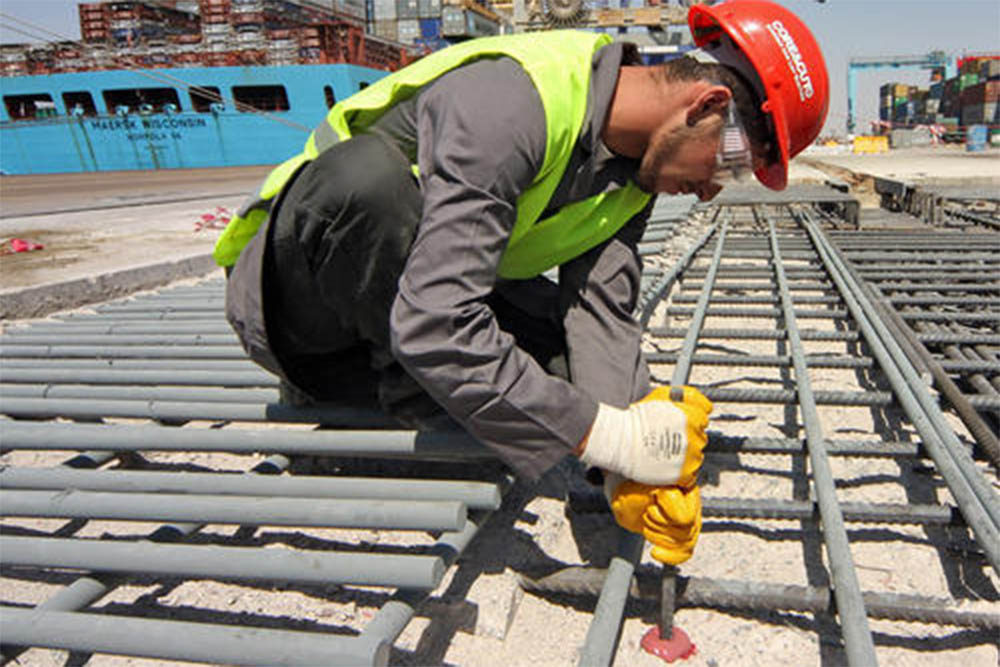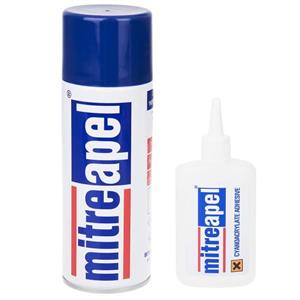Everything you need to know about rebar planting glue
Iran pomex pomex
Rebar planting is an operation that is done to increase the durability and strength of concrete. In fact, today one of the most widely used works to increase the strength of concrete structures is rebar planting. Among the conditions that compel engineers to use this method to strengthen concrete structures are changes in technical specifications and plans for the design and implementation of structures, changes in usage and operating conditions, ease of implementation and availability. Materials and equipment mentioned. The steps of the rebar planting method in concrete, in the order of making holes in the concrete by drilling or sanding on the concrete surfaces, washing and cleaning the concrete surfaces and inside the holes created by the blower and air suckers, injecting the rebar planting glue by means of special equipment at a sufficient depth and finally installing the rebar on the concrete structure.
✔ Characteristics of rebar planting adhesive
Rebar planting glue is a chemical substance that is produced based on epoxy, polyester and vinyl ester resins. In addition to the polymer resins in its composition, the rebar planting glue in concrete also has concrete additives. These additives include softening materials to increase the flexibility of the rebar planting adhesive and reduce the glass transition temperature, fillers that reduce the shrinkage of the adhesive during setting and hardening and strengthen its mechanical properties. The most important feature of rebar planting adhesives, which should generally be present in all different types of these adhesives, includes appropriate viscosity during mixing and installation, appropriate consumption time, appropriate gelling time, appropriate storage time, density and saturation. It is accepted. In general, the resistance characteristics of rebar planting adhesive against static, dynamic and pseudo-dynamic loads are very important. Also, the issue of how adhesives perform in corrosive and acidic environments is a point of attention.
✔ Applications of rebar planting glue
Filling gaps in the ceiling, wall and floor
Installation of metal plates on vertical surfaces
Planting bolts and rebars on vertical and horizontal surfaces
✔ The benefits of using reinforcement planting glue
Fast and easy implementation
No need to use solvents
High adhesive properties
Atmospheric and environmental factors do not affect it
✔ Types of rebar planting glue (rebar planting)
Like all the products available in the construction industry, rebar planting glue is also produced in different types and brands, each of which has its own unique features. It is obvious that before choosing a rebar planting glue brand, sufficient and necessary research should be done to know the best suitable rebar planting glue. Like all products, when choosing the right glue, it is necessary to pay enough attention to the relevant regulations and laws so that we can make the best choice. Rebar planting glue has differences in terms of chemical composition, mechanical characteristics, and application, and in this sense, they are divided into three general categories:
Capsule rebar implant adhesive
Cartridge rebar planting glue
Volumetric rebar planting glue
Capsule rebar implant adhesive
This product belongs to the family of polyester and epoxy vinyl ester resins. Capsule planting adhesives are offered in two components (2-part planting paste). These adhesives are used for special bolts with nut heads. In this method, the implant adhesive is embedded in transparent and glass capsules. These capsules are available in different sizes and volumes. Capsule rebar planting glue is available in the market inside clear glasses. These adhesives are also known as glass bolt and twist adhesives. It consists of two components: polyester resins and epoxy vinyl ester resin and is available in different volumes. These types of adhesives should be used after breaking the glass wall, and after this, they create a very strong grip that shows high resistance even in corrosive and acidic environments.
Cartridge rebar planting glue
Cartridge planting adhesives are used for planting on concrete, wooden and stone surfaces. Cartridge rebar planting glue is also two-component and is based on epoxy resin or polyester or vinyl ester and the second component is polyamine hardener, which is used to install and plant reinforcement on concrete surfaces. The general belief is that among the three general types of rebar planting glue, the cartridge type is better than the others because it is easy to implement, its error is low, and it shows very high quality. Of course, it should also be mentioned that this glue has a higher price than the other two types.
Volumetric rebar planting glue
Volume rebar planting glue is usually two or three components. The 3-component solvent-free type is based on bisphenol A epoxy resin, hard concrete and polyamide, which is designed to plant reinforcement and bolts in reinforced concrete. Volumetric rebar planting adhesive creates very high adhesion on different concrete surfaces, and the high tensile and bending resistance it creates is usually noticed by engineers.
One of the most economical and practical ways to increase the strength of concrete is to use rebars or bolts. Sometimes, due to reasons such as mistakes in concrete execution, changes in plans, calculation mistakes, mistakes in rebar placement, increase in shear strength, changes in plan parameters, rebars (rebars) are used in the foundation. By increasing the resistance, this method makes it possible to make changes and makes it possible to correct the defects in the design or implementation of concrete.
In cases such as connecting new concrete to old, implementing columns, beams and shear walls, rebar planting in the right number and diameter can be used. Rebar planting is done in three ways using cement base materials, rebar planting paste (chemical) or mechanical restraint.
✔ Methods of using rebar planting (rebar planting)
Cement base material
In the rod planting method, using cement base materials, they create a hole with a diameter of 55 mm larger than the diameter of the rebar. After cleaning and removing dust, the created cavity is filled with mortar containing expanding and softening materials to the ratio of two-thirds of the cavity volume. Then the armature is guided into the cavity by the jack.
Mechanical restraint
In the method of mechanical restraint, a hole with a diameter of 2 mm larger than the rebar is created and the rebar is placed inside the cavity along with the mechanical restraint. By turning the armature screw, the fins at the end are opened and stick to the wall of the cavity. Although these blades can cause the wall to crumble, but in any case, they are very useful in static works, including the methods of planting bolts and planting reinforcement.



بدون دیدگاه